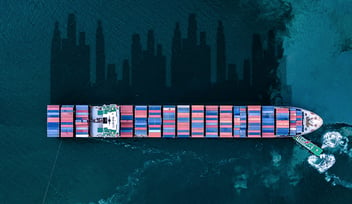Nine years ago, the European Union regulatory initiative PSD1 opened up the bloc’s banking and financial services market. Payment Services Directive 1, to give it its full title, is a supranational law designed to regulate payment services and payment service providers in all EU and EEA Member States. The proposal was ratified in November 2009 and came into effect the following month. Its objective is threefold: to stimulate competition throughout Europe, improve the quality of services and protect consumers.
Since its creation, PSD1 has resulted in three major changes:
- It introduced a new industry category, in the form of payment service providers, as well as a regulatory framework that allows new non-bank companies to carry out financial transactions. In the past, only banks, central banks or government agencies provided payment services.
- It brought greater transparency. Banks and other payment service providers are required to be transparent about their services and fees, including maximum payment execution times, fees and exchange rates.
- It accelerated the development of SEPA as a single euro payment area to facilitate the execution of payments.
Thanks to PSD1, European customers, be they private individuals or companies, can benefit from faster and cheaper payments in the EU and the EEA. PSD1 has also led to the emergence of a whole new generation of companies, which has had a positive influence on the banking and financial services sector. These companies, commonly referred to as fintechs (for "financial technology") leverage technological solutions, through online platforms or mobile applications, and offer consumers a combination of new services, better experiences and lower prices.
iBanFirst was among the first fintechs to obtain a licence to act as a payment service provider under PSD1 in Belgium in May 2013.
PSD2 paves the way for new account information and payment initiation services
PSD2 is a revised and consolidated version of PSD1, which came into effect in January 2018. This second directive goes one step further, paving the way for important changes in the banking and payments markets. PSD2 encourages innovation by creating two new payment services.
- The first of these is the "Account Information Service Provider" (AISP), which enables new players to access account information, including balances and transactions, for one or more accounts and one or more banks.
- The second is the "Payment Initiation Service Provider" (PISP), which gives new players the possibility of initiating payments on behalf of the payer. Instead of initiating payment through their bank, the user can initiate payment via a PISP, which in turn transmits the instruction to the bank, the latter acting as an intermediary in this instance.
PSD2 has the potential to change and significantly improve the banking and financial services experience. New players will be able to offer their customers and users the possibility of consulting their accounts and initiating payments. This is already the case in the B2C space for individuals, with account aggregation services, such as Bankin in France, Figo in Germany and Tink in Sweden, as well as payment initiation services, such as Linxo in France, Satispay in Italy and Fintonic in Spain.
B2B players reacted more slowly than those in B2C. Companies have not yet seen the full potential of PSD2 and the new AISP and PISP accreditations.
At iBanFirst, we are proud to be one of the first payment service providers to obtain the AISP and PISP status in Belgium, as of July 2018. These new statuses open up a host of opportunities for iBanFirst to capitalise on. We will be able to offer CFOs, accounting professionals and treasurers in a vast array of industries an experience similar to that they have with their current banking and financial services, but with considerable advantages.
Topics






